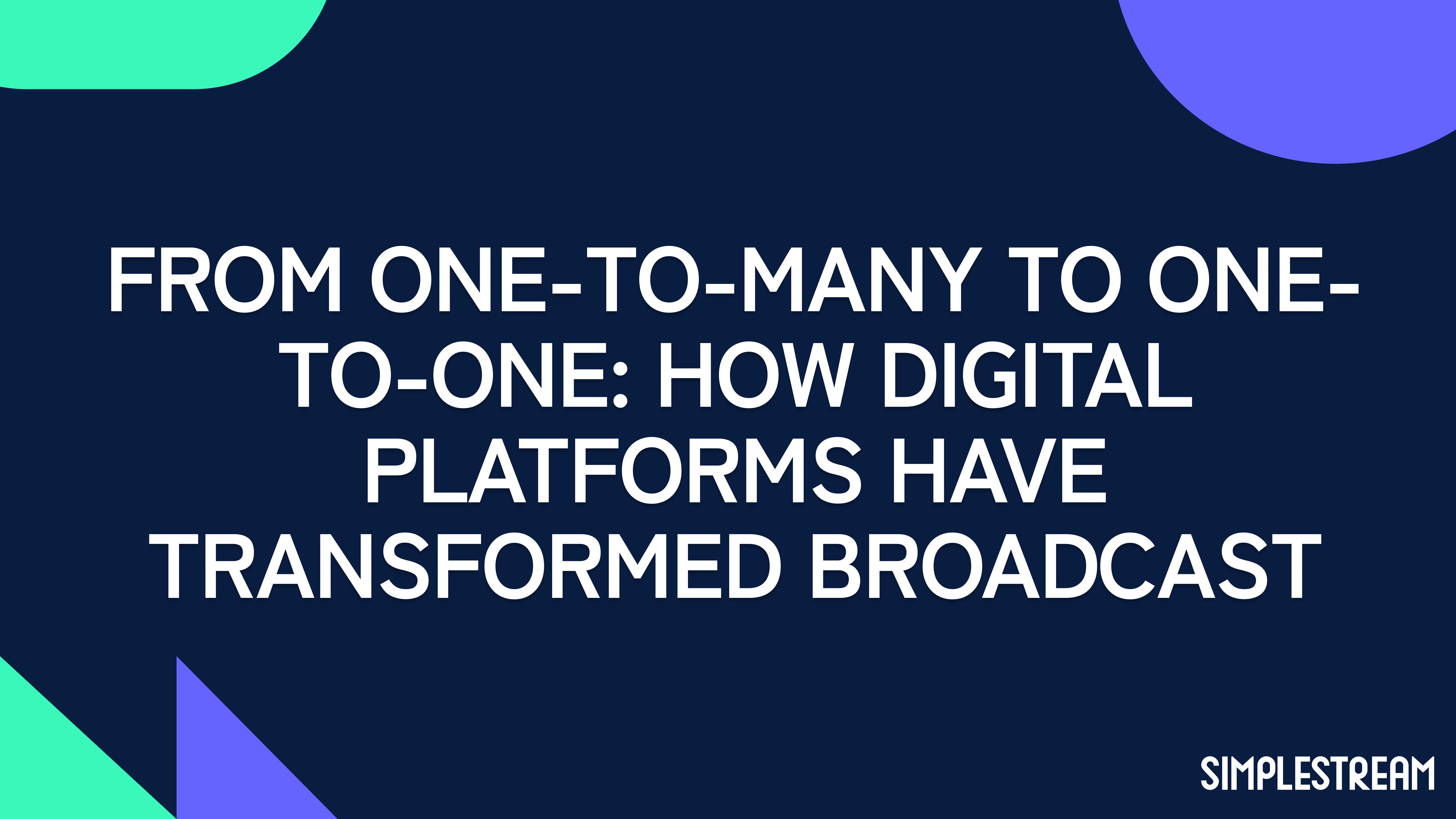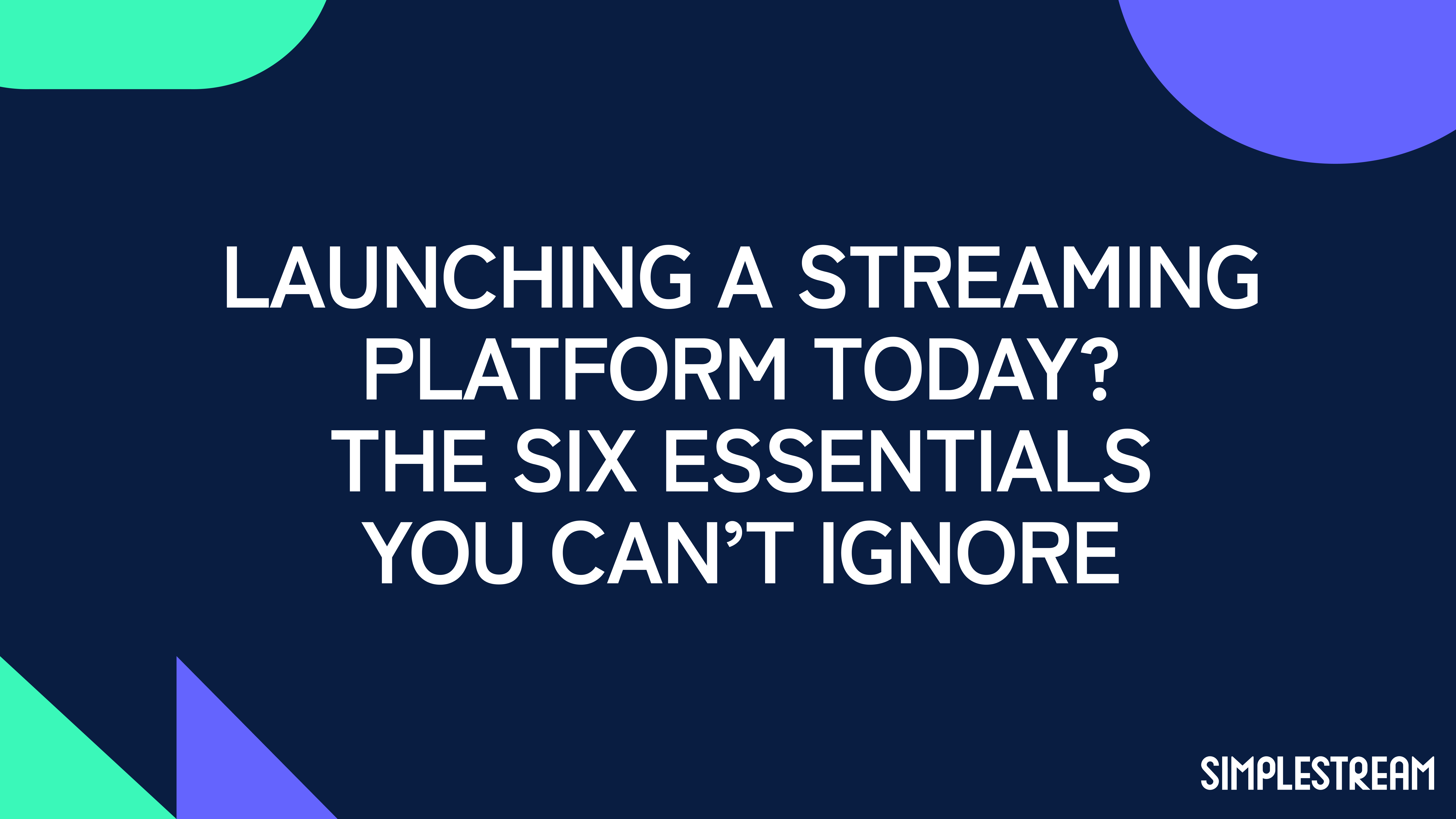AVOD vs FAST: which is best?
What is the difference between AVOD and FAST? The advantages and key aspects of each to help you decide which is best for your business.
#1. Are FAST and AVOD the same thing?
#2. What are the advantages and disadvantages of FAST vs AVOD?
#3. Do FAST and AVOD generate revenue?
#4. The best of both worlds
When comparing advertising video on demand (AVOD) and free ad-supported television (FAST), it’s not quite apples and oranges. They are both monetisation methods that use advertising, but the distribution method differs.
AVOD provides content on demand, so the viewer can choose what they watch and when. FAST resembles the traditional TV experience, where you would choose a channel and watch whatever is scheduled at the time of viewing. There’s much more to each model than the distribution though. Let’s continue:
#1. Are FAST and AVOD the same thing?
The similarities begin and end with the fact that both FAST and AVOD use advertising to monetise content. Viewers usually won’t have to pay to watch the content they consume through each model. Both are sometimes referred to as "freemium", which is when content is offered at no cost to the user with a charge for unlocking premium features - such as removing the advertising altogether, for an uninterrupted experience.
📺 FAST channels have content scheduled in a linear programme, with advertising inserted into it at breakpoints, almost exactly like a traditional broadcast TV channel.
🎯 AVOD is used to provide content that the viewer chooses on demand from a content library, which also includes targeted advertising inserted into it at breakpoints.

#2. What are the advantages and disadvantages of FAST vs AVOD?
Advertising as a revenue model is growing in the OTT and streaming sectors. Digital video is expected to have the highest share of advertising spend in 2023, accounting for 22.4% of a market valued at $865 billion. So, the question isn’t whether the advertising-based monetisation model drives revenue, it’s just a case of deciding which is best for your service and content.
AVOD advantages:
- You can make your service free or freemium while generating revenue from ads.
- No requirement for user registration.
- Users have complete control over what content they want to watch.
- Cheaper and easier to implement than subscription or paid models.
- Server-Side Ad Insertion (SSAI) provides higher ad fill rates for greater revenue generation.
- Higher cost per mille (CPM) for ads, meaning more ad revenue in your pocket.
- Possible to syndicate content to the Freevee platform for access to larger audiences.
FAST advantages:
- Completely free for users while still generating revenue from ads.
- No requirement for user registration.
- Users can have a more relaxed experience with fewer decisions to make about what to watch, minimising decision fatigue.
- Cheaper and easier to implement than subscription or paid models.
- Server-Side Ad Insertion (SSAI) provides higher ad fill rates for greater revenue generation. Linear ‘live’ content performs well with a 98% completion rate on average.
- Higher cost per mille (CPM) for ads, meaning more ad revenue in your pocket.
You’ll notice that many of the benefits of each model are similar, with the only real difference being that the experience for your viewers is the game-changer. That’s a substantial factor, because with FAST channels the viewer has a much more relaxed viewing experience by only having to decide on a channel to watch rather than a particular episode or movie. It’s the comfort of the traditional TV experience we can all tap into: get home, switch on, turn off.
#3. Do FAST and AVOD generate revenue?
The AVOD market was worth $38 billion in 2022 and will reach $91 billion in 2028, so there’s healthy growth here. It’s being driven by many of the largest streaming services switching to hybrid subscription models with ad-supported tiers. This is a response to consumer demand, as they’re stretched between the plethora of subscription-based services available to them. Wallets are getting lighter worldwide so it’s no surprise that the cash-strapped consumer is gravitating towards content they can access for free.
FAST is growing too, with revenue set to reach $12 billion by 2027. These channels present the closest experience to traditional TV, without the monthly bill which is usually associated with accessing premium content.
If you’d like to launch FAST channels, then our simple six-step guide is the ideal place to start, read it here.
#4. The best of both worlds
Put yourself in the shoes of an ideal end user and think about the experience from their perspective. When being enticed to consume content, is this more compelling if it’s at no cost? Now imagine the upsell opportunities by using AVOD as a freemium tier for a service that also offers subscriptions which will remove those ads. Also, the economics of paying out to acquire a subscriber for $50-70 when they’re paying $10 a month and churning after 5-7 months doesn’t make sense. Offering content for free with advertising makes more sense as you’re not spending any money to acquire those potential future subscribers.
To maximise revenue from advertising, having a service that includes AVOD for accessing content on demand and FAST channels for a comforting tv-like experience would provide your audience with the best of both worlds. Live content consumption data gathered from across our customer base shows a trend for viewers to favour watching live content longer. On average, viewers will watch live content for 33 minutes versus 16 minutes for on demand. Capturing the viewer's attention and keeping them engaged would be easier with a FAST channel that provides a curated experience of the top content your AVOD service offers.



